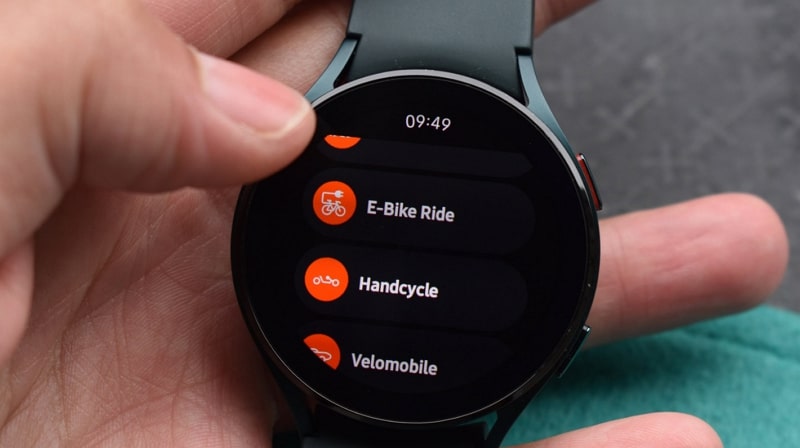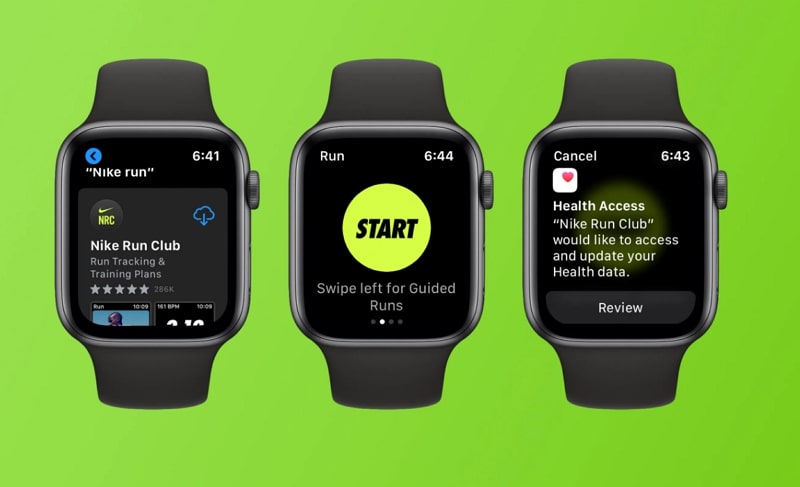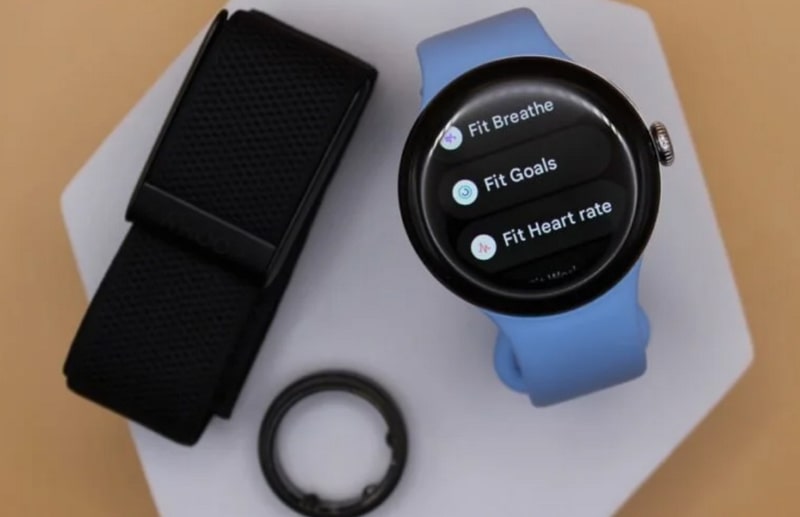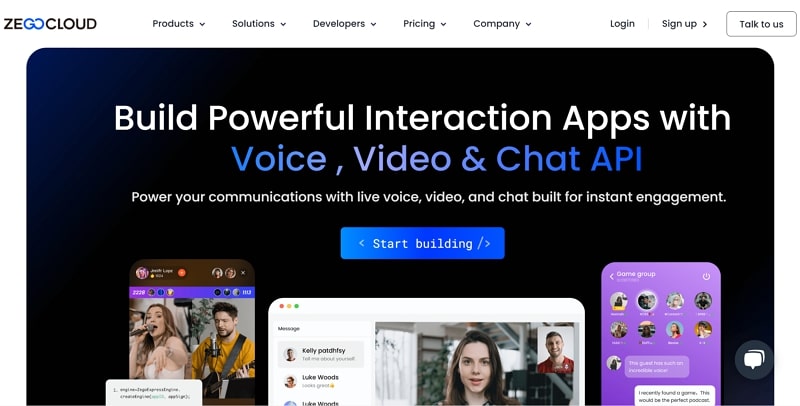The wearable app market is experiencing a significant surge in growth across various industries. When talking about healthcare, smart wearable devices track vital signs and aid in chronic disease management. Other than that, sports and fitness sectors utilize wearables to monitor and optimize performance. So, this article will analyze the impact of wearable app development in different industries to help you explore its importance.
Wearable Apps Market Overview
As discussed, wearable products are finding their footing in multiple industries, boosting this particular app development market. According to Fortune Business Insights, the wearable market is expected to grow from around one-fifty billion dollars in 2024 to fifteen hundred billion dollars by 2032. Moreover, a significant portion of this 31.5% CAGR will be due to the boost in the wearable devices app development market.
An earlier report from Cognitive Market Research indicated that there will be an 8% annual growth in the market from 2023 to 2030. Most of this wearable app development services market is captured by tech giants in North America, as you can see through the graph given below.
While talking about the industries dominating this market, healthcare wearable app development comes on top due to the role of wearables in diagnostics. Moreover, the gaming industry also enjoys a large share of this market, as seen through this chart.
What is Wearable App Development?
Most people worldwide are familiar with smartwatches that track your heart rate, steps, and calories burned. Wearable app development is behind the seamless integration of these features with its advanced technology. Such app-building involves creating software specifically designed for wearable devices like smartwatches, fitness trackers, and VR headsets.
Moreover, these apps benefit from the unique features of wearables, including sensors and compact screens, to provide health-oriented functionalities. By understanding the intricacies of these devices, wearable app development companies create engaging applications that seamlessly integrate into users’ lives.
The Difference Between Wearable and Mobile Apps
After getting the know-how of wearable devices app development, let’s understand how these apps are different from conventional mobile applications. For this purpose, you can analyze the detailed comparison table given below to differentiate between both these app categories.
| Metrics | Wearable Apps | Mobile Apps |
|---|---|---|
| Device Types | When talking about wearable app development, companies have the option to make applications for a wide range of devices, such as smartwatches, hearing aids, smart clothing, and more. | In contrast, mobile app development is only restricted to conventional mobiles and tablets. |
| Battery Life | Longer | Comparatively Lesser |
| Display Size | Smaller | Larger Screens |
| Sensor Integration | Wearable app development services have the option to make use of extensive sensors, including accelerometer, GPS, and more. | Limited |
| App Complexity | Simpler | More Complex |
| Development Platforms | watchOS, Wear OS, Tizen, Fitbit OS | iOS, Android |
| Market Adoption | Niche market | Mainstream adoption |
| Use Cases | Health monitoring, Fitness tracking, Notifications, Hands-free operations | Communication, Social media, Gaming, Productivity |
| Example Apps | Strava, MyFitnessPal, Sleep Cycle, Headspace | Instagram, WhatsApp, Google Maps |
Examples of Key Wearable Platforms
The use case of wearable apps is not just limited to smartwatches, as there are many technologies introduced in the market that utilize such applications. Throughout this section, we will talk about all such technologies and platforms, which can benefit from wearable app development.
1. Smartwatches
As all of us know, smartwatches belong to a wearable device category that offer a blend of fitness tracking and health monitoring functionalities. Using these devices, you can monitor heart rate, track steps, and even perform ECGs due to their advanced sensors. With support for various apps, smartwatches allow users to receive notifications and control music right from their wrists.
Examples: Apple Watch, Samsung Galaxy Watch
2. Fitness Trackers
When talking about the top wearable device app development platforms, fitness trackers stand out due to their focus on health and activity tracking. Moreover, these devices monitor various metrics, such as steps taken and distance traveled, to keep you on a healthy track. Other than that, these platforms have simple design and long battery life for continuous wear.
Examples: Fitbit, Garmin
3. Virtual Reality Headsets
Such advanced headsets provide immersive virtual experiences by simulating a 3D environment for user interaction. Generally speaking, these devices became popular in gaming, but their applications have extended to education and virtual tours. Apart from that, these devices come with high-resolution displays to create a sense of presence in virtual worlds.
Examples: Oculus Quest, PlayStation VR
4. Smart Clothing
With this newer wearable app development technology, companies integrate sensors into textiles to monitor biometric data and enhance athletic performance. Using such a garment, athletes can measure their heart rate and muscle activity for real-time feedback. In addition, sportsmen wear these smart clothes to get valuable insights that help optimize training and prevent injuries.
Examples: Hexoskin Smart Shirt, Athos
5. Smart Rings
As a more compact alternative to smartwatches, these rings can track activities, monitor sleep, and even make contactless payments. Moreover, these smart rings prove to be valuable for those who prefer minimalistic wearables without compromising on essential smart features. Most importantly, their unobtrusive design makes them suitable for continuous wear.
Example: Oura Ring, Motiv Ring
6. Hearing Aids with Smart Features
Many wearable app development companies are investing in modern hearing aids due to features like noise reduction and health tracking. With the help of these devices, you can stream audio from phones and other devices for multifunctionality. Other than that, these advanced hearing aids can also monitor physical activity and provide fall detection to enhance the overall well-being of users.
Examples: Starkey Livio AI, Phonak Marvel
Top 5 Most Successful Wearable Apps
All these advanced platforms raise the need for feature-rich apps that can get the best out of these wearable technologies. After thorough research, we have identified the top apps to give you better insights into wearable app development.
1. Strava

Fresh developers can take inspiration from Strava, as it provides advanced functionalities when it comes to tracking and analyzing various physical activities. To track your physical efforts, such as cycling and hiking, this app utilizes GPS data to provide detailed performance metrics, including distance and elevation. Other than that, users can benefit from this app on numerous devices and wearables, which makes it a go-to choice for fitness enthusiasts seeking motivation.
Supported Platforms: Android, iOS
2. Nike Training Club

While talking about wearable device app development, Nike Training Club comes to mind due to its wide range of workouts and training programs. Moreover, this application proves to be suitable for all fitness levels, providing options for strength training and mobility exercises. Using this app, you can track your progress and receive workout recommendations based on your goals.
Supported Platforms: Android, iOS
3. Beat Saber

Other than healthcare apps, wearable app development companies also produced some masterpieces when it comes to gaming. Beat Saber is one such highly popular rhythm game where players use virtual lightsabers to slash through blocks representing musical beats. Moreover, this game provides immersive gameplay with physical movements that make it a fun activity.
Supported Platforms: Meta Quest Pro, PlayStation VR
4. Sleep Cycle

Users can make use of this application to monitor sleep patterns and help them wake up feeling refreshed. Using the phone’s microphone and accelerometer in wearable devices, this app analyzes movements and sounds during the night to determine the different sleep phases. Furthermore, it even provides detailed sleep statistics and trends to assist users in understanding their sleep quality and making informed adjustments to their routines.
Supported Platforms: iOS
5. Google Fit

When discussing the best healthcare wearable app development examples, this app emerges as the top option. With the help of this tracking platform, you can monitor physical activities and integrate them with various health apps to get a comprehensive view of fitness. Apart from that, Google Fit incorporates heart rate monitoring and other health metrics, which you can sync with wearables to gather data in one place.
Supported Platforms: Android, iOS
The Most Promising Industries to Create Wearable Apps
As mentioned throughout this article, wearable app development is not limited to just a single industry or platform. Here, we will analyze some of the top industries that require innovative apps to get the best out of wearable technologies:
- Fitness and Wellness: Within this wearable apps industry, you will see an emphasis on activity tracking and personalized fitness plans. Moreover, the wearables utilized for this industry can monitor steps and heart rates to offer insights to improve physical performance. Overall, these apps help users set and achieve fitness goals for a healthier lifestyle.
- Healthcare: The healthcare wearable app development industry holds the largest market share which demonstrates its significance. Apart from that, such apps focus on remote patient monitoring and preventive care to reduce hospital visits. Using wearable devices, healthcare professionals are now able to track vital signs and get real-time health data.
- Sports and Athletics: In such an industry, wearable apps provide advanced performance analytics and injury prevention tools. Moreover, athletes use wearables to track metrics like speed and muscle activity to gain valuable insights during training. Other than that, these apps help in real-time monitoring during games for performance optimization.
- Fashion and Smart Textiles: Wearable devices app development has also found its footing in the fashion industry. Companies are now exploring smart textiles and wearable technology to create innovative clothing with integrated functionalities. Furthermore, developers can build wearable apps to control smart garments that adjust temperature or monitor biometric data.
- Entertainment and Media: Wearable apps in entertainment and media enhance user experiences through augmented and virtual reality. Devices such as VR headsets and AR glasses can transform gaming and interactive storytelling for immersive experiences.
How to Create a Wearable App?
Developers who want to have their share in the wearable app development industry should learn the best way to build such apps. To make yourself aware of the best practices while building wearables, go through the detailed instructions explained in this section:
Step 1. Research the Wearable App Market and Come Up with an App Idea
Before you start building a wearable app, you need to conduct thorough research to understand the current trends in the wearable technology market. While doing so, you should identify gaps within the market and explore how your app can provide unique solutions. Plus, we recommend defining your target audience by considering demographics, preferences, and pain points.
Other than that, you will be required to identify what makes successful apps thrive and how you can differentiate your app. After all these assessments, developers can move towards brainstorming app ideas that align with market needs and your expertise.
Step 2. Pick the Wearable App Type and Desired Features for Your Apps
Once you brainstorm the app idea, we recommend you clearly think about how users will interact with your app in their daily lives. Apart from that, you can assess which wearable platform best suits your app’s purpose of reaching the desired user base.
As a wearable app development company, you should stay updated with the latest trends in wearable technology. When it comes to the features of these apps, developers should take the following points into consideration:
- Core Features: To start the feature-identification process, determine the essential functionalities that your app must have to fulfill its primary purpose. For instance, a fitness tracking app should have step counting, GPS tracking, and calorie counting features.
- User Experience Considerations: Developers need to design features with the wearable app development device’s unique attributes in mind. As we know, wearable devices typically have smaller screens, so we need to optimize apps based on this point.
- Additional Features: In addition, we recommend that you identify secondary features that can enhance the user experience. These features can include social sharing, goal setting, or integration with other apps and services.
- Notification Management: Wearable devices are often used for their ability to provide timely alerts without the need for a phone. So, while developing such apps, you need to ensure notifications are relevant and not overwhelming for the user.
Step 3. Choose the Right Wearable App Tech Stack
As discussed before, you need to select appropriate programming languages based on your chosen platform. For example, Swift is used for watchOS, Kotlin or Java is used for Wear OS, and JavaScript is used for Tizen. Once you have selected the language, you can utilize development tools and SDKs provided by the platform, as explained below:
- Xcode for watchOS
- Android Studio for Wear OS
- Samsung Developer Tools for Tizen
Apart from that, developers need to plan the backend infrastructure and APIs your app will require for data storage and communication. To access the best communication APIs, we recommend you visit the ZEGOCLOUD platform for optimized wearable device app development.

Step 4. Start the Wearable App Development Process
Upon gathering the necessary tech stack, you can start the app-building process by creating prototypes and wireframes to visualize the app’s design. Afterward, developers can proceed to code the app, starting with core functionalities and gradually integrating additional features. Throughout the process, you need to test the app on actual wearable devices to ensure compatibility and user experience.
How to Find a Great Wearable App Development Vendor?
When looking to acquire the best wearable app development services, you need to conduct detailed research on their background. Go through the factors given below to help yourself find the best developers for the wearable app-building project:
- Shortlist App Development Companies: Start the process by conducting online research to identify reputable companies with experience in wearable technology. While doing research, you can seek recommendations from your network or professional associations to shortlist the best wearable app development companies.
- Evaluate Experience and Expertise: Upon shortlisting the vendors, look for options with a proven track record in developing wearable apps. They should have experience working with various wearable platforms such as watchOS, Wear OS, and Fitbit OS. Afterward, hiring managers should review their portfolios to see examples of past projects.
- Check Client Testimonials and Reviews: As a business, you need to request references from previous clients to get firsthand feedback on their experience with the vendor. Owners also need to look for reviews on platforms such as Clutch or Google Reviews to research the company’s past experience.
- Consider Cost and Value Proposition: To meet the tight budget constraints, seek vendors who provide transparent pricing models. While cost is an essential factor, you need to prioritize value over the lowest price during wearable app development. Moreover, developers should consider the fact that a more experienced vendor might be more expensive but can deliver higher ROI.
Integrating ZEGOCLOUD into Wearable Application Development for Enhanced Real-Time Communication
Wearable technology has revolutionized the way we interact with the digital world, providing seamless access to information and communication on the go. Integrating ZEGOCLOUD’s real-time communication capabilities into wearable applications can significantly enhance the user experience by enabling high-quality audio and video interactions, live streaming, and instant messaging.

Here’s how ZEGOCLOUD can be integrated into wearable applications for enhanced real-time communication.
1. Real-Time Audio and Video Communication
- High-Quality Calls: ZEGOCLOUD provides robust video call APIs and SDKs that support high-quality audio and video calls. Wearable devices, such as smartwatches and AR glasses, can leverage these capabilities to enable users to make and receive calls without the need for a smartphone.
- Group Conversations: Wearable applications can incorporate group call functionality, allowing users to participate in conference calls or family chats directly from their wearable device.
2. Live Streaming
- Broadcasting: Users can live stream events directly from their wearable devices. For instance, athletes can broadcast their training sessions, or adventurers can share live feeds of their explorations, providing a unique perspective to their audience.
- Viewer Interaction: Incorporating live chat features during streaming sessions enables real-time interaction between the broadcaster and viewers, making the experience more engaging.
3. Real-Time Messaging
- Instant Messaging: ZEGOCLOUD’s real-time messaging SDK allows users to send and receive text messages, images, and voice notes through their wearable devices, ensuring constant connectivity.
- Notifications and Alerts: Wearable applications can use real-time messaging to send critical alerts and notifications to users, such as health alerts or important reminders.
Conclusion
Throughout this article, we discussed the advancements in the wearable app development industry. You have also analyzed different platforms and industries, which require the services of experienced wearable app developers. You can further ease out the process of the wearable devices app development by integrating APIs and SDKs offered by ZEGOCLOUD. Moreover, its advanced communication features will boost the functionality of your wearable apps.
Read more:
FAQ
Q1: What are the key considerations when developing a wearable app?
Key considerations for developing a wearable app include user interface design, battery efficiency, sensor integration, connectivity, and cross-platform compatibility. Ensuring a seamless and intuitive user experience while optimizing for the limited screen size and battery life of wearable devices is crucial. Additionally, leveraging the unique sensors and features of wearables, such as heart rate monitors and GPS, can enhance app functionality.
Q2: What platforms are commonly supported by wearable app development?
Wearable app development commonly supports platforms such as iOS (for Apple Watch) and Android (for Wear OS devices). Developers can use specific SDKs provided by Apple and Google to create applications that are optimized for these platforms. Additionally, cross-platform development frameworks like Flutter and React Native can be used to build apps that work across multiple wearable devices.
Q3: What are the common challenges in wearable app development?
Common challenges in wearable app development include limited device resources (such as battery life and processing power), small screen sizes, and diverse hardware specifications. Developers must optimize app performance and user experience within these constraints. Additionally, ensuring seamless connectivity and data synchronization between the wearable device and other platforms (like smartphones) can be challenging. Overcoming these challenges requires careful planning, testing, and optimization.
Let’s Build APP Together
Start building with real-time video, voice & chat SDK for apps today!










